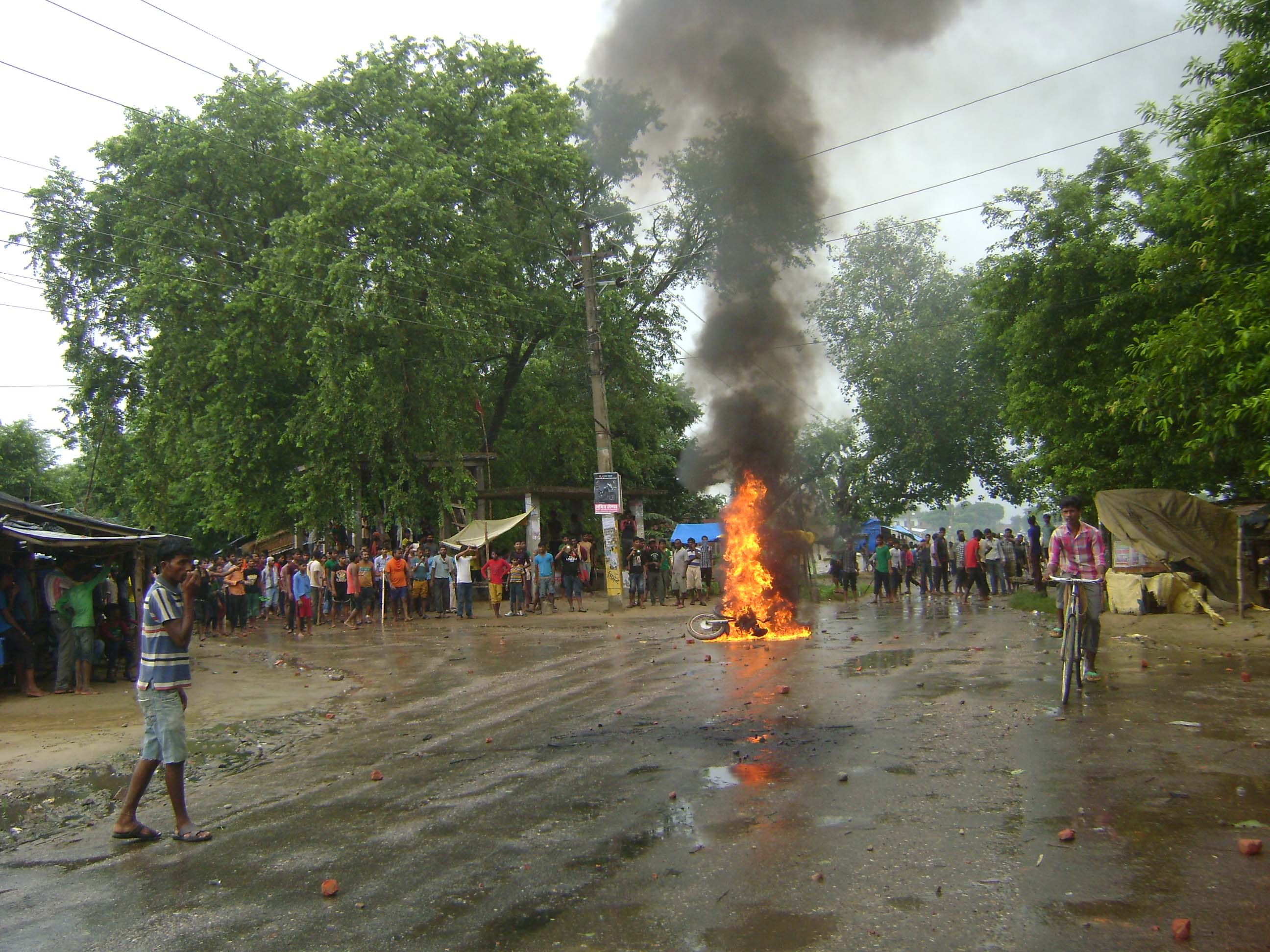NEPAL: Protest, revenge, death spreads across Nepal’s Terai
The Asian Human Rights Commission (AHRC) has received information that gives cause for alarm. It appears what happened at Kailali is set to happen in other regions of Terai as well. If lessons are not learned and a pathway for a just and unified Nepal is not opened, the tinderbox could ignite. A keen observer on what is unfolding in Nepal, the AHRC has reason to be extremely concerned about the increasing violence in Nepal’s Terai.
Today, September 2, the AHRC has learned of the imminent possibility of violence in Gaur, Rautahat District, and Birgunj, Parsa District. Protesters are incensed after the police opened fire amidst a protestor police clash on August 31. The police firing killed Dilip Chaurasiya, who was aged 30 and resident of Manariya in Parsa District. Thirty-five others have been injured in this firing. Zakir Hussain, someone grievously injured in the police firing, has been brought to Kathmandu for treatment.

The violence and killing continued the following day, i.e. yesterday, September 1. In clashes and ensuing police firing in Parsa District, Krishna Patel, Hafijat Miya, Dharm Raj Singh, and Sohan Sah Kalbar were killed, and seven others have been shot and seriously injured, which includes those shot by the police inside the premises of Narayani Sub-Regional Hospital. Of those killed, Sohan Sah Kalbar was an innocent bystander. Kalbar, a local resident of Nagwa peeked out of his window and was greeted by a bullet to his head.
There have been numerous clashes and resultant police shootings across the Parsa District since Dilip Chaurasiya’s death. For instance, when around 25 protestors were demonstrating in Kalaiya Chowk, District Superintendent of Police (DSP) Binod Sharma arrived with a van full of police personnel and opened fire on the protestors. Hafijat Miya, a local resident of Kalaiya was killed on the spot, while Suresh Yadav, Raja Babu Sah, and Rahul Chaudhary sustained bullet injuries.
AHRC notes that rather than opening a dialogue with the protestors and thereby dealing with the root cause and de-escalating tensions, the government of Nepal has deployed large numbers of army and police personnel; the clamping down through the armed personnel, and via curfews and expansion of prohibited areas in the Terai has only increased tensions and confrontations with the aggrieved local population.
The killing of police personnel in Kailali is condemnable, however, this incident is not and should not be viewed in isolation; more than an attack on the ‘police’ it is but an escalation of ethnic violence which can turn worse if its nature is not understood. On the other hand, the local administration has declared Birgunj as a riot zone. This is but an excuse to deploy the Nepal Army to suppress the protests. This does not bode well for the democracy that Nepal intends to become.
The violence, taking place in the Terai daily, has historic bearings when seen from the lens of the history of the communities, but also needs to be comprehended with regard to the chain of events in the past two months. After protesters died in police firing in Surkhet District in August, the Ministry of Home Affairs released a circular that the policemen should not carry bullets. That is why in Kailali, on August 24, the Nepal police only carried rubber bullets. On that day, 8 police officers including a toddler were killed; the officers were mob lynched, stabbed and speared and burnt to death. Following this, the police have erupted with violence in Nepal’s Terai. They are not following minimum standard in the use of force and have been shooting directly with intend to kill, with a revenge and tribal mentality that cannot be justified under any circumstances. Terai now burns; are 2-5 deaths almost everyday.
Prolonged protests have heightened tension between the protestors and security personnel and such a situation has increased the risks of human rights violations. The AHRC, therefore, urges all the stakeholders, including the political parties and the government to seek a negotiated settlement with respect to the outstanding constitutional issues and the demarcation as soon as possible. The AHRC calls upon the political leaders to dialogue and reconsider the demands of Tharu and Madhesi groups. Leaders from the Madhesi and Tharu groups must urge restraint to ensure protestors do not turn to violence.
The security agencies for their part must strictly follow the rules set in Local Administration Act, 1971, before using lethal force. The security personnel must not use lethal force above the knee and in mass protests. The Nepal State should treat the injured protestors for free and provide compensation to those who have died in police firing.
The AHRC also urges the National Human Rights Commission to issue fresh directives to security agencies so that they maintain restraint and respect human rights even during the protests.



